Most dairy farms are fairly hectic places at the moment. However, it was a relaxed scene that greeted the Irish Farmers Journal when we visited Joe Deane’s Minane Bridge farm last Monday afternoon.
Firstly, the exceptional weather means that cows have been out day and night since the first cow calved on 26 January.
The second thing is that the herd was still being milked once a day, but was just about to switch to twice-a-day milking.
The system is also helping – Joe is leasing three dairy farms around south and east Cork and milking 480 cows in total.
There will be 200 or so cows milked on the Minane Bridge farm this year. There were 140 early-calving cows wintered on the farm this winter and these are now all calved and have been joined by 40 cows from one of the other farms, bringing to 180 the number of cows milking today.
In effect, calving is finished on this farm, even though another 20 freshly calved cows will join the herd over the coming weeks.
A good share of the bull calves have been sold and 48 of the heifer calves have already gone to the contract rearer, so the workload is reducing big time with mainly just cows, grass and around 40 heifer calves to look after.
The farm is managed by Roscommon man Eamon Hora, who has been looking after the farm for the last four years and who also owns and leases in 15 of the cows on the farm. He is helped out by Micheál O’Donnell, a UCC agricultural science student on placement.
We’ve 26% of the farm grazed to date
With so many cows calved and a high demand for grass, I asked Eamon how he will keep enough grass in the diet until early April.
“We’ve 26% of the farm grazed to date, and we’d be aiming to have 35% to 37% grazed by the end of February so we’re on target. We have all the wetter parts of the farm grazed now and most of the higher covers, so I think we’re in a good position. We also opened at a fairly high cover of 1,160kg/ha and have a cover of 912kg/ha today,” he says.
Opening cover is actually back about 100kg/ha compared to other years and with a higher demand for grass this spring, Eamon is feeding 4kg of meal instead of the normal 3kg. He says he may have to push this up to 5kg per day if it means keeping silage out of the diet.
Stocking rate
With 66ha in the block, the stocking rate is just over three cows/ha in total with an 18ha support block. Around 2.5ha of beet pushes stocking rate up to 3.2 cows/ha for most of the year.
The beet is grazed in situ by the cows in late September and early October to build up grass covers and extend the grazing rotation;
“We start off grazing it for just 20 minutes per day, just to get them in and out and used to eating it. We do that for one week.
“We then increase the allocation by about 0.5kg per cow per day up to a maximum of 3kg dry matter per cow per day, which is about 1.5 to two hours of grazing per day.
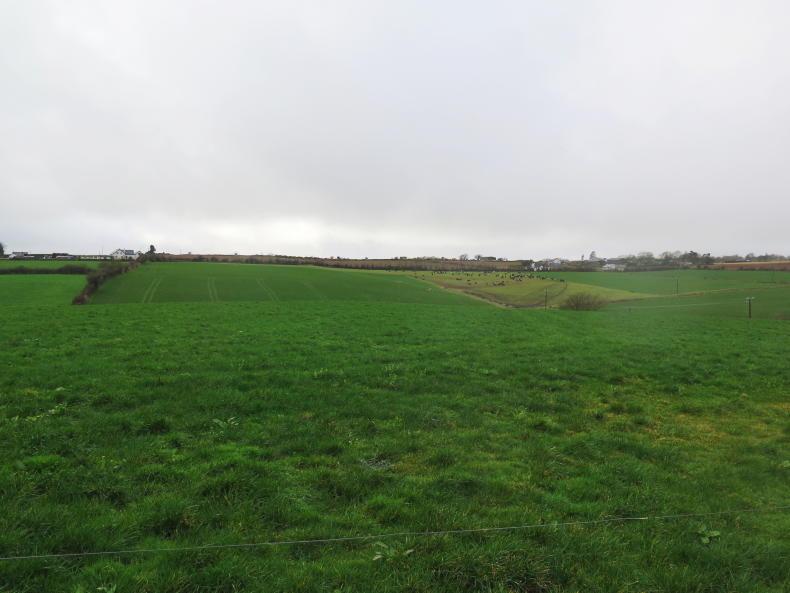
Joe has over 26% of the farm grazed and conditions are close to perfect.
“It’s a great feed for cows and it means that we don’t have to feed silage in the autumn to build covers and the fact that the stocking rate is a bit higher during the summer means that we don’t have as much surplus grass in the summer months, so less bales need to be made,” Eamon says.
Joe says that the beet normally costs between €500 and €600 per acre to grow, excluding land charges.
At a yield of 20t DM/ha, that works out at 7c/kg DM. He says costs increased by between 20% to 30% last year, so the cost per kilo of dry matter is now closer to 10c/kg but it is still very good value relative to silage or meal.
So far the spring has gone well, with no real issues in cows save for three cases of milk fever and a high SCC.
Cell count is currently at 300,000 but is expected to drop as soon as cows go back to twice-a-day milking.
Eamon and Micheál are stripping cows at each milking and are confident that there are no clinical cases of mastitis.
The average SCC last year was 160,000 so they reckon it’s just a blip, although Joe says that SCC has been slowly creeping up in recent years and is something that must be watched.
Contractors
There is a high reliance on contractors on the farm, with contractors coming in to feed out silage every second day during the winter, plus they come back to clean out calving pens and calf pens whenever necessary.

The field that was in beet last year will also be sown to beet this year.
There is a 2WD tractor with loader on the farm but that’s mainly just for pushing in silage. Contractors spread all the slurry and fertiliser too.
At this stage, about 40% of the farm has got slurry at a rate of 2,500 gallons/acre with a trailing shoe applicator on an umbilical pipe. Another 20% of the farm has got 25kg N/ha of urea with the remaining 40% of the farm considered to be high covers, which will get chemical nitrogen after grazing at 25kg N/ha rate.
The plan is to spread the entire farm with 1.25 bags/acre of 18:6:12 in March, followed by urea and then go with another round of 18:6:12 later in the spring.
Joe says that they experienced some grass tetany two years ago and he reckons this could be linked to too much potash being spread in spring, so this is something he is conscious of.
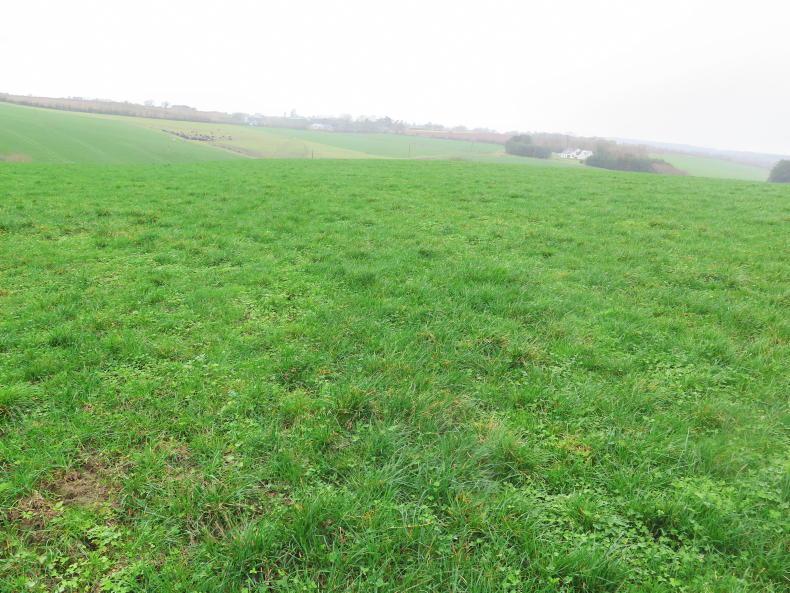
One of the high clover content fields on Joe Deane's farm in Minane Bridge.
Joe is working on getting clover established across the farms and the Minane Bridge farm has 25% with good clover content.
Last year, they spread 180kg N/ha on average across the farm with the high clover fields getting no nitrogen from May onwards. He says that the high clover swards will end up getting 80kg to 100kg N/ha, while the grass-only swards will get over 200kg N/ha. The farm grew 12.5t DM/ha last year, back from the normal 14t DM/ha.
Leasing
From a 20ha beef farm in Whitegate in east Cork, Joe has progressed up the dairy ranks from farm manager to herd owner and is now running the substantial dairy business on mostly leased land.
He has three full-time employees working for him, plus a support team of relief milkers, contractors and contract rearers.

The first-grazed paddock has a cover of 250kg DM/ha back on it.
Each of the leases has been secured through the Land Mobility Service, which is a bit like a match-making service for landowners and young farmers looking to lease a dairy farm.
Candidates are vetted and the lease agreement is negotiated with the professional help of the service, which ensures fairness for all sides.
In order to make the system work for Joe who has full lease and labour costs, operating costs must be kept low.
He normally feeds around 600kg of meal per cow, grows 14t DM/ha and the herds produce 470kg MS/cow.
Cows have been out day and night since calving on Joe Deane’s farm at Minane Bridge in south Cork. They have 26% of the farm grazed and while all cows have calved on this farm, 70% of the cows across all three farms have calved. Average farm cover is 912kg/ha and the cows are being fed 4kg of meal. The target is to start the second rotation in early April with a cover of 550kg/ha.
Most dairy farms are fairly hectic places at the moment. However, it was a relaxed scene that greeted the Irish Farmers Journal when we visited Joe Deane’s Minane Bridge farm last Monday afternoon.
Firstly, the exceptional weather means that cows have been out day and night since the first cow calved on 26 January.
The second thing is that the herd was still being milked once a day, but was just about to switch to twice-a-day milking.
The system is also helping – Joe is leasing three dairy farms around south and east Cork and milking 480 cows in total.
There will be 200 or so cows milked on the Minane Bridge farm this year. There were 140 early-calving cows wintered on the farm this winter and these are now all calved and have been joined by 40 cows from one of the other farms, bringing to 180 the number of cows milking today.
In effect, calving is finished on this farm, even though another 20 freshly calved cows will join the herd over the coming weeks.
A good share of the bull calves have been sold and 48 of the heifer calves have already gone to the contract rearer, so the workload is reducing big time with mainly just cows, grass and around 40 heifer calves to look after.
The farm is managed by Roscommon man Eamon Hora, who has been looking after the farm for the last four years and who also owns and leases in 15 of the cows on the farm. He is helped out by Micheál O’Donnell, a UCC agricultural science student on placement.
We’ve 26% of the farm grazed to date
With so many cows calved and a high demand for grass, I asked Eamon how he will keep enough grass in the diet until early April.
“We’ve 26% of the farm grazed to date, and we’d be aiming to have 35% to 37% grazed by the end of February so we’re on target. We have all the wetter parts of the farm grazed now and most of the higher covers, so I think we’re in a good position. We also opened at a fairly high cover of 1,160kg/ha and have a cover of 912kg/ha today,” he says.
Opening cover is actually back about 100kg/ha compared to other years and with a higher demand for grass this spring, Eamon is feeding 4kg of meal instead of the normal 3kg. He says he may have to push this up to 5kg per day if it means keeping silage out of the diet.
Stocking rate
With 66ha in the block, the stocking rate is just over three cows/ha in total with an 18ha support block. Around 2.5ha of beet pushes stocking rate up to 3.2 cows/ha for most of the year.
The beet is grazed in situ by the cows in late September and early October to build up grass covers and extend the grazing rotation;
“We start off grazing it for just 20 minutes per day, just to get them in and out and used to eating it. We do that for one week.
“We then increase the allocation by about 0.5kg per cow per day up to a maximum of 3kg dry matter per cow per day, which is about 1.5 to two hours of grazing per day.

Joe has over 26% of the farm grazed and conditions are close to perfect.
“It’s a great feed for cows and it means that we don’t have to feed silage in the autumn to build covers and the fact that the stocking rate is a bit higher during the summer means that we don’t have as much surplus grass in the summer months, so less bales need to be made,” Eamon says.
Joe says that the beet normally costs between €500 and €600 per acre to grow, excluding land charges.
At a yield of 20t DM/ha, that works out at 7c/kg DM. He says costs increased by between 20% to 30% last year, so the cost per kilo of dry matter is now closer to 10c/kg but it is still very good value relative to silage or meal.
So far the spring has gone well, with no real issues in cows save for three cases of milk fever and a high SCC.
Cell count is currently at 300,000 but is expected to drop as soon as cows go back to twice-a-day milking.
Eamon and Micheál are stripping cows at each milking and are confident that there are no clinical cases of mastitis.
The average SCC last year was 160,000 so they reckon it’s just a blip, although Joe says that SCC has been slowly creeping up in recent years and is something that must be watched.
Contractors
There is a high reliance on contractors on the farm, with contractors coming in to feed out silage every second day during the winter, plus they come back to clean out calving pens and calf pens whenever necessary.

The field that was in beet last year will also be sown to beet this year.
There is a 2WD tractor with loader on the farm but that’s mainly just for pushing in silage. Contractors spread all the slurry and fertiliser too.
At this stage, about 40% of the farm has got slurry at a rate of 2,500 gallons/acre with a trailing shoe applicator on an umbilical pipe. Another 20% of the farm has got 25kg N/ha of urea with the remaining 40% of the farm considered to be high covers, which will get chemical nitrogen after grazing at 25kg N/ha rate.
The plan is to spread the entire farm with 1.25 bags/acre of 18:6:12 in March, followed by urea and then go with another round of 18:6:12 later in the spring.
Joe says that they experienced some grass tetany two years ago and he reckons this could be linked to too much potash being spread in spring, so this is something he is conscious of.

One of the high clover content fields on Joe Deane's farm in Minane Bridge.
Joe is working on getting clover established across the farms and the Minane Bridge farm has 25% with good clover content.
Last year, they spread 180kg N/ha on average across the farm with the high clover fields getting no nitrogen from May onwards. He says that the high clover swards will end up getting 80kg to 100kg N/ha, while the grass-only swards will get over 200kg N/ha. The farm grew 12.5t DM/ha last year, back from the normal 14t DM/ha.
Leasing
From a 20ha beef farm in Whitegate in east Cork, Joe has progressed up the dairy ranks from farm manager to herd owner and is now running the substantial dairy business on mostly leased land.
He has three full-time employees working for him, plus a support team of relief milkers, contractors and contract rearers.

The first-grazed paddock has a cover of 250kg DM/ha back on it.
Each of the leases has been secured through the Land Mobility Service, which is a bit like a match-making service for landowners and young farmers looking to lease a dairy farm.
Candidates are vetted and the lease agreement is negotiated with the professional help of the service, which ensures fairness for all sides.
In order to make the system work for Joe who has full lease and labour costs, operating costs must be kept low.
He normally feeds around 600kg of meal per cow, grows 14t DM/ha and the herds produce 470kg MS/cow.
Cows have been out day and night since calving on Joe Deane’s farm at Minane Bridge in south Cork. They have 26% of the farm grazed and while all cows have calved on this farm, 70% of the cows across all three farms have calved. Average farm cover is 912kg/ha and the cows are being fed 4kg of meal. The target is to start the second rotation in early April with a cover of 550kg/ha. 







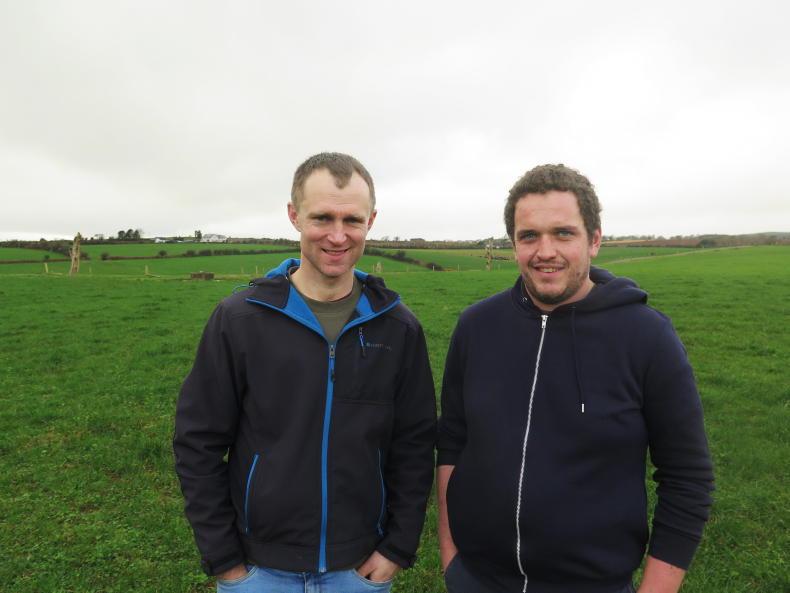
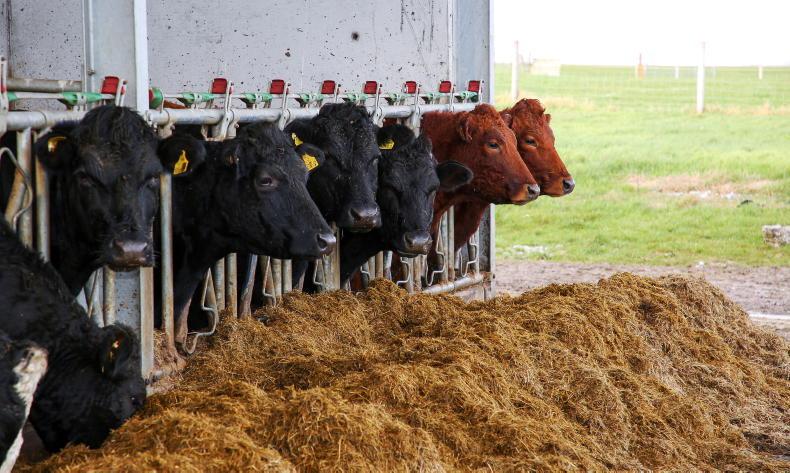

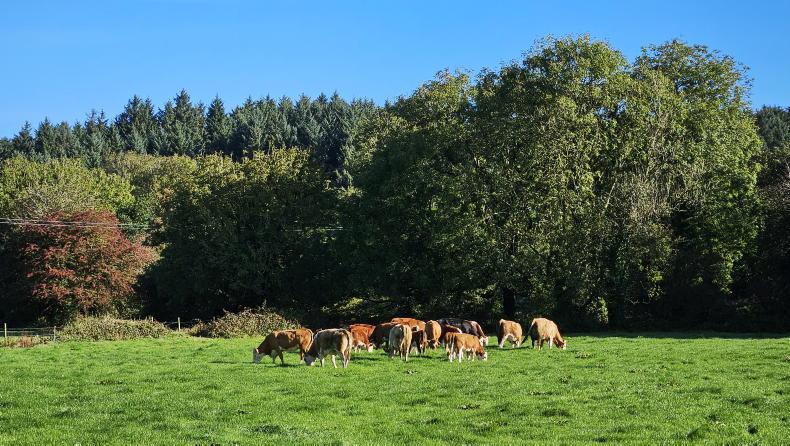
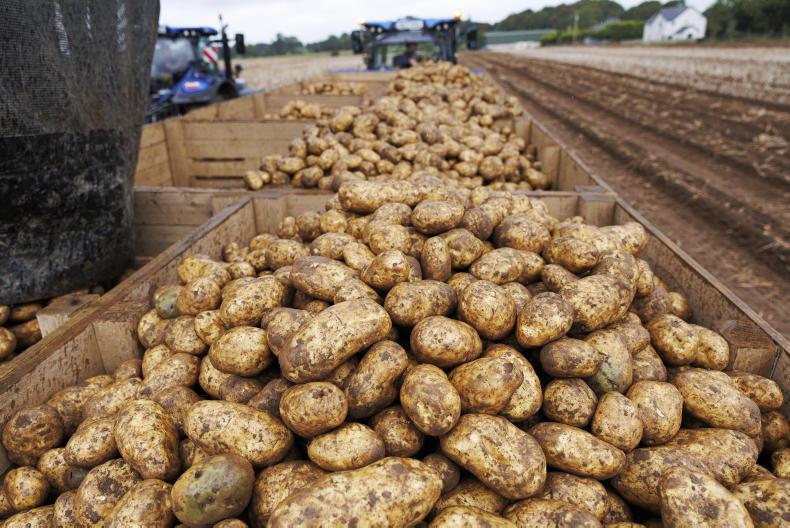
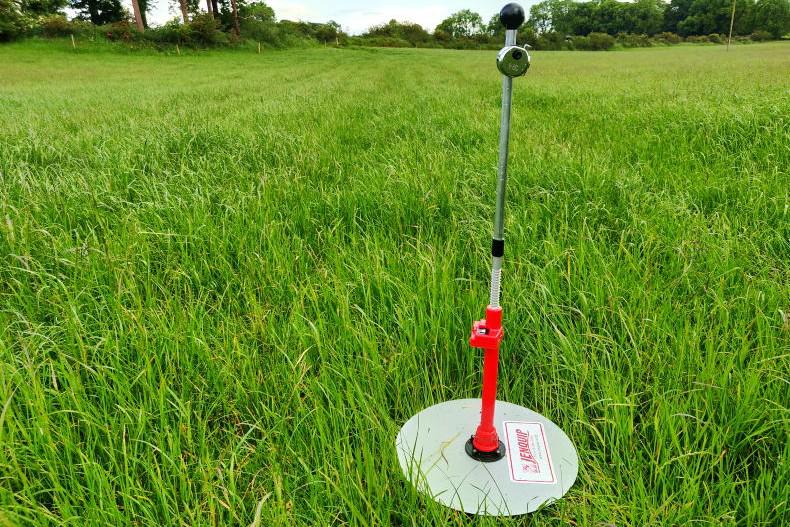
SHARING OPTIONS